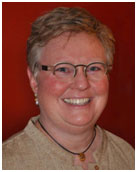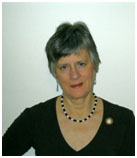Bodylight Learning
Brain-Friendly Education
for the Health Sciences
In Association with Bodylight Books
| HOME | PRODUCTS | SAMPLES | CLASSES | RESOURCES | ABOUT | CONTACT US |

|
(none scheduled) Neck, Jaw, Head - Intraoral Massage Intraoral Endorsement 3D Fascial Techniques - Thorax/Abdomen/Pelvis 3D Anatomy & Techniques The Art of Oscillation Using Rhythm in Manual Therapy The Neck, Jaw and Avenue of Expression The Neck, Jaw and Avenue of Expression Muscle Memories Strengthening Your Musculoskeletal Knowledge Intraoral Review & Refinement Day Deepen Your Intraoral Massage Skills Delving Deeper Somatic Explorations Series Muscle Memories: Sea-Tac Special Edition Strengthening Your Musculoskeletal Knowledge |
| Classes The Future of Bodywork The Role of the Client in Bodywork | |||||||||||||||
|
Panel: Deane Juhan, Dave Campbell, Diana Thompson, BJ Erkan,
Jack Blackburn, Alison Day, with Michael Hamm as Moderator Wednesday, April 25, 2012, 6:00-9:30PM, in Seattle, WA This special symposium is the third in the Trillium Institute's series: The Future of Bodywork. As before, the evening will include a panel of bodywork practitioners and educators. There will also be breakout groups formed around certain issues and much opportunity for discussion. The theme for this evening will center around the question: “What part does the client play in his/her own therapy?” We will look at different possible activations of client physical, verbal, and somatic interactions. We will also look at less interactive client responses like sleeping, chatting, dissociation, flashbacks, and panic attacks. We will also look at client self-care approaches away from the sessions. Are there ways of improving our therapeutic effectiveness that involve revising and expanding our scope of practice and paradigm of treatment by directly involving clients in their own healing? Issues Affecting the Client’s Role:
At least 50 percent of what is happening during sessions is determined by the client. And 100 percent of what is happening between sessions is determined by the client. We know that many factors in clients’ lives determine how they progress in bodywork sessions. Some clients become very involved in their own process and some clients leave everything up to the practitioner and the insurance company. Many clients do not really know why we do what we do and many clients assume that we get paid our regular rates by third party payers. Clients do not know how much their attitude about their bodies, their emotional state and their external lives affect their body state and vice versa. How can we work with clients and include these factors in their process legitimately? | |||||||||||||||
|
|
|||||||||||||||
The Future of Bodywork (Seattle, WA) Panel Discussion and Breakout Sessions Wednesday, April 25, 2012, 6:00-9:30PM, 3 CE hours Location: Nalanda West, 3902 Woodland Park Ave N, Seattle Tuition: $40 one person, $60 two people registering together This class is being sponsored by Jack Blackburn as part of his series The Future of Bodywork. Please go to Jack's web site to register for this April 25 Seattle event. | |||||||||||||||
|
| |||||||||||||||
|
© 2022 Bodylight Books







